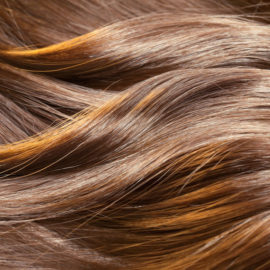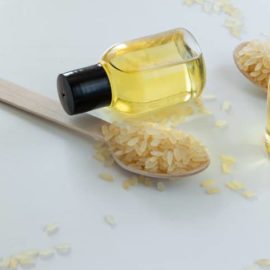Eyebrow loss in menopause can often become a key concern. Caused by the plethora of hormonal changes that takes place during menopause, eyebrow loss often bothers women going through this key moment of transformation, as eyebrows and their look remain crucial for facial expressions.
The use of masks during the pandemic brought a renovated focus on eyes and eyebrows. However, concerns around eyebrow thickness had long been important for customers. In fact, a study by Nielsen in 2018 already reported a 24% growth in eyebrow treatments compared to previous years.
How are eyebrow loss and menopause related and what can brands do to push their customers’ confidence and provide an efficient remedy for eyebrow loss related to menopause? We take a close look at the issue.
Content
Eyebrow loss; menopause and other causes
Women going through the profound transformation that is menopause are witnesses to many changes. While some changes more apparent than others, eyebrow loss and menopause are two issues that are often linked together.
As such, it’s common for women to notice their eyebrows become thinner, sparse or patchy during menopause.
The source for this thinning process in eyebrows is, actually, a conjunction of causes, most of them having to do with hormonal changes typically associated with menopause, which have a direct effect on hair growth.
During menopause, hormone levels shift. This includes changes in estrogen and progesterone levels, which may be the root for many hair thinning issues during menopause. On the other hand, a dominance of testosterone may cause other unwanted hair issues, especially when it appears in the face.
As a result, other hair issues related to menopause include an increased frizziness, hair thinning and fragility and the loss of natural curls. This is also typical of postpartum scenarios, which are typically ruled by potent hormonal changes which have led to specific postpartum skin care.
Regarding eyebrow loss in particular, it’s essential to take a look at prostaglandin in particular: this hormone is in charge of signaling eyebrows to grow and, as we get older, its production declines. This is the main reason behind eyebrow changes from menopause, which may also include a coarse look or a change in color.
This eyebrow loss in menopause might also be exacerbated by previous issues related to eyebrows, such as eyebrows that have been over-tweezed or over-waxed, eyebrow loss related to certain prescription medication or hypothyroidism problems.
Well-aging in eyebrow loss and menopause
Cosmetic brands have valued the aging segment for decades, aware of its potential for continuous growth. In fact, it’s one of the most profitable in the BPC industry: it was worth $40.49 billion in 2020 and is expected to grow at a CAGR of 5.4% from 2021 to 2028, according to figures published by Grandview Research estimates.
However, just like other areas in the current BPC market, the aging segment has gone through recent transformations that challenge brands to align with new customer values and preferences.
In this case, it’s the well-aging movement that has taken center stage. The idea behind this movement is that, unlike traditional narratives in cosmetics, aging and the changes it entails is to be embraced and not fought over.
At the same time, the role of cosmetic brands is to accompany customers through these changes and provide the tools and empowerment to achieve “wellness” through this transformation, instead of promoting unrealistic beauty standards and a “forever young” motto.
The well-aging movement has grown hand in hand with inclusivity and encouraging all types of beauty narratives, as well as building more welcoming communities through new cosmetic narratives.
From this perspective and in the case of eyebrow loss and menopause, the role of brands is help customers develop thicker eyebrows while promoting a healthy narrative around aging.
Because natural processes in aging include a reduction in prostaglandin levels, brands can provide relief in minimizing this process by delivering follicle stimulation.
At Provital we focus on offering cutting-edge scientific advancements for aging cosmetic products. This includes our PRONALEN FIBRO-ACTIF, which stimulates follicles by increasing the cell oxidative metabolism and thus providing the necessary energy for hair growth and reducing eyebrow loss in menopause.
No comments yet
There are no comments on this post yet.





Leave a comment